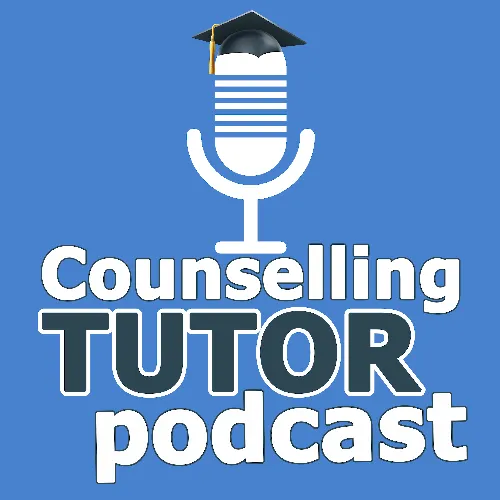113 – Therapeutic Use of Self
- Author
- Ken Kelly and Rory Lees-Oakes
- Published
- Sat 18 May 2019
- Episode Link
- https://counsellingtutor.com/therapeutic-use-of-self/
The Neuroscience of Empathy - Rory's New Book
In episode 113 of the Counselling Tutor Podcast, Ken Kelly and Rory Lees-Oakes start by talking about the neuroscience underlying empathy in humans and animals. In 'Practice Matters', Rory explores the therapeutic use of self in counselling. Last but most certainly not least, Ken announces the publication of Rory's new book, Counselling Theory in Practice: A Student Guide (Nielsens UK, 2019), and asks Rory to tell us more about his motivations for writing this and what readers can expect to find there.
The Neuroscience of Empathy (starts at 2.15 mins)
One of the types of cell in the human brain is the mirror neuron. These neurons help us empathise with others and communicate this understanding to them.
Animals also have mirror neurons, and a question recently arose on equine therapy in the Counselling Tutor Facebook group.
Horses are particularly sensitive animals and can use their mirror neurons to provide comfort and reassurance with people who are struggling following trauma.
Other animals - such as dogs - also seem to have a way of knowing when we are feeling sad, and showing us their care.
It can be hard to know whether this is real or a result of anthropomorphising - in other words, projecting human qualities onto animals.
In humans, vasovagal syndrome can cause people to faint if they witness (perhaps even on the television) a distressing situation or injury in someone else.
Research in neuroscience is a growing edge in the world of counselling and psychotherapy, with famous writers on the topic including Bessel van der Kolk and Dan Siegel.
Therapeutic Use of Self in Counselling (starts at 10.55 mins)
Rory talks about the therapeutic use of self, or how therapists draw on their own feelings, experiences and personality to enhance the therapeutic process through:
appropriate self-disclosure, to normalise the client's experience
immediacy, to bring into awareness the counsellor's feelings or observations regarding the client and their material
presence and attending, to hold the client in the centre of the counsellor's attention.
Dangers of the therapeutic use of self include transference/countertransference and overstepping boundaries.
Rory's handout on this topic can be downloaded here; it is also available through the Handouts Vault and Counselling Study Resource (CSR).
Rory's New Book (starts at 14.27 mins)
Ken is excited to announce the publication of Rory's new book, Counselling Theory in Practice: A Student Guide (Nielsens UK, 2019).
Over a year in the writing, this comprehensive book follows Rory's observation (during his ten years as a counselling lecturer at practice level) that the core curriculum for counselling training has a number of gaps.
In this book, Rory aims to fill these gaps in a way that is easy to read and understand, so helping current counselling students and newly qualified practitioners to bridge the gap between study and practice.
It can also help people considering counselling study to decide the right way forward for them.
Ken shares a number of reviews by readers who have had a preview of the book, which comprises the following 25 chapters:
Counselling in the real world
